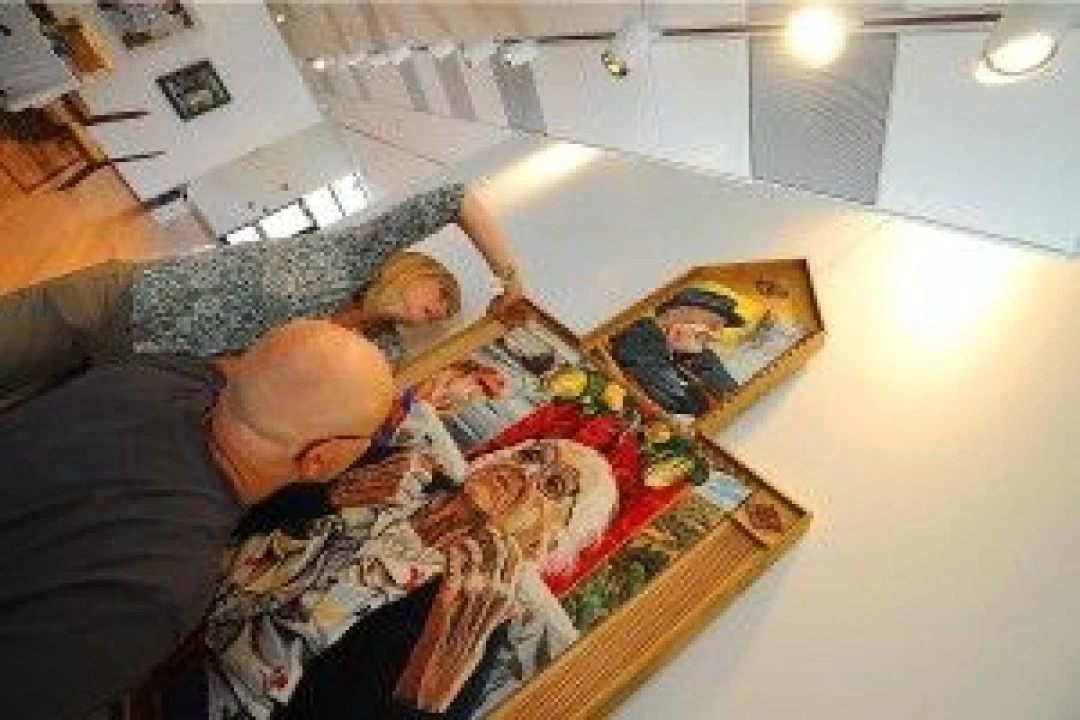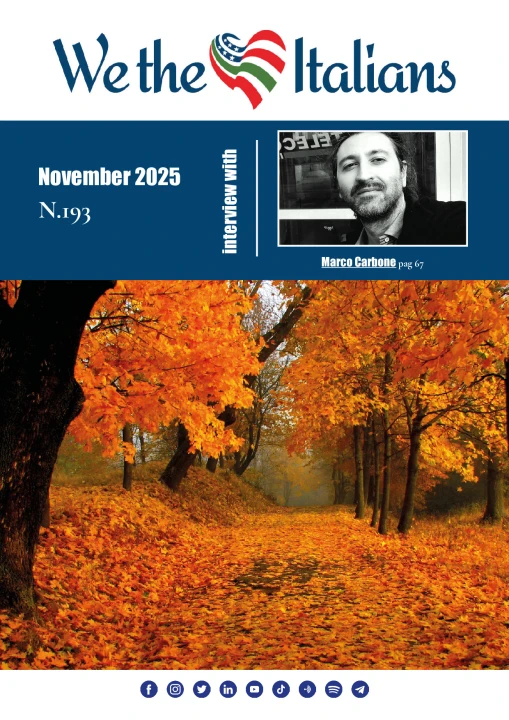BATAVIA — When Thomas MacPherson looks at an empty gallery he doesn't see blank walls.
He sees a dining room table covered in linen, set with antique china awaiting a Sunday dinner. Or maybe, his grandmother's bedroom arranged with period furniture. And in another area, he's likely to find a living room with a sofa, love seat or the La-Z-Boy recliner that his grandfather died in.
"Thomas MacPherson: Documenti: The Italian American Family Album," opening Saturday in the Rosalie "Roz" Steiner Art Gallery at Genesee Community College, 1 College Rd., is a full-gallery installation that looks at life in an immigrant American household during the 1940s, 1950s and 1960s. The show is presented through a series of rooms that capture the look and feel of MacPherson's grandmother's house in Cleveland during the 1950s and 1960s.
"The whole point is to come in and explore my family to see who your family is," said MacPherson, an art studio professor at Geneseo State College who is using the installation to explore how his Italian-American family integrated itself into American society. "This show is part family memoir. It's like you'll be meeting these people even though they're long dead."
The installation opens Saturday with a reception at 4 p.m. in the Gallery adjacent to the Genesee Center for the Arts. "Documenti," which remains on view through Aug. 27, includes original portrait paintings, furniture, artwork and artifacts authentic to the period and modified by personal experiences.
"This exhibition is really a destination event," Gallery Director Shirley Verrico said. "MacPherson presents outstanding artwork to view as well as multiple rooms to explore. Everyone will find something familiar within the installation, allowing them to connect with their own past and the experience of the artist."
An art installation is more than an exhibition. An installation takes a disparate collection of items — often of a three-dimensional nature, but which may include paintings and multimedia elements — and assembles them in a site-specific environment that may incorporate part of that space in the installation.
MacPherson, during a late June visit to take measurements of the gallery and plan how he would use the space, brought several paintings and a wooden treasure chest. He laughs as he uncovers an ashtray that features one of his baby shoes that had been bronzed. It was a gift from his mother to his father, a smoker.
"Every person in the 1950s probably had one," he said. "But now we'd see it as so wrong."
Also inside, the trunk is a shawl and old shoe that belonged to his grandmother, and a Palm Sunday crucifix that she had made. There were also his father's war medals, including a Bronze Star and Purple Heart, old cigar boxes that belonged to his great uncle and beer bottles he found in the woods.
"The installation is like an environment," MacPherson said. "Inside, it's creating who my parents were and dealing with their assimilation into society."
The Steiner Gallery "rooms" will also include a kitchen with metal table and utensils and a display off the dining room that has photos of the war experiences of two family members. Visitors are encouraged to explore drawers and photo albums to learn more about the family's heritage, which is Sicilian and also Scottish. Biographical material will be included throughout the installation.
Several interactive elements are planned. In the living room, visitors can contribute to the exhibition via a bulletin board. Grandma's bedroom includes a computer where visitors can watch videos of grandma talking about her life, and Italian foods and favorite family recipes that visitors can take home. The Gallery will also use its Facebook page to allow artists and the public to talk about the installation long after the opening reception.
Verrico, the gallery director, says the installation — which was being created during four days this week — is the most ambitious, physically challenging exhibition ever staged in the gallery that opened barely 15 months ago.
"Contemporary art is not just pictures hanging on a wall," she said. "It's really fun to be faced with this kind of creative plan. This show is so much about nostalgia and we want to make sure we create that."
MacPherson said his biggest challenge in staging "Documenti" at GCC is taking the very contemporary gallery with its open space and large windows, and turning it into an early 20th century home.
It's a challenge MacPherson gladly accepts. The installation is never static, he said, as its composition can change from show to show due to differing spaces and the addition of new materials. MacPherson also likes to incorporate new ideas into the rooms that will further explore his themes or improve the presentation.
"A lot of times the floor plan dictates what the show looks like," MacPherson said. "It can be frightening to come in having ideas for the show and then get nervous putting it up. If it's not working you just have to rearrange."
MacPherson, who teaches watercolor, drawing and figure drawing at Geneseo State, first presented his small installation as part of a faculty art show. Later, he created several rooms for an installation at Case Western Reserve University in Cleveland, Ohio. The installation has expanded as more furniture has been added.
"Some of these are really personal artifacts. Where it was furniture at one time, but now since it's in a gallery they become more like family artifacts and they transcend that fact that they were utilitarian objects and have become something aesthetic," MacPherson said.
The idea for creating the installation evolved from MacPherson's own study of egg tempura painting in New York City in 2005. The technique is tedious, with multiple layers used to create each painting, but each layer must dry before new painting can be done.
"I was wondering what to do with it and got the idea of a series of family portraits," said MacPherson, who has a master of fine arts degree in printmaking and drawing from the University of South Carolina and a bachelor's in studio art from Oswego State College. "It occurred to me that maybe I could paint in the environments" reflective of his family members.
MacPherson's portraits feature family members and other symbolic elements that reflect works by other artists that he used as touchstones for his work, and details from family stories he remembers from his childhood.
His Great Uncle Pete, for example, was a marine surveyor who often told stories — "tall tales," MacPherson called them — from his Merchant Marine days. He is painted with a cigar because he was always smoking, and a Roman landscape representing one of his favorite places to visit.
"Even if you don't know his story, you can see he's a world traveler," MacPherson said.
Another portrait shows his grandmother on MacPherson's mother's wedding day. Grandmother MacPherson didn't like Catholics or the Catholic church. She looks annoyed. The artist has painted several Catholic images around the picture of his two grandmother's and two popes, including Pope Pius XII, who was presiding at the time; angels in the heavens looking down, and the Swiss guards. Look closely and MacPherson's grandmother has trampled one of the guards.
MacPherson's own First Communion portrait features his childhood role models: the men in his life, his father and grandfather, and also his sports heroes, which included Jim Brown of the Cleveland Browns professional football team.
The paintings are arranged like artwork on the walls of a house.
"It shows the history of the family and who they were," MacPherson said of both his paintings and installation. "There's a lot of real characters. You'll laugh at some of them. Some of them you'll roll your eyeballs over. But they are all interesting."
Subscribe to our Newsletter
By subscribing, you'll get the latest blog post and news by email.
SUBSCRIBE


